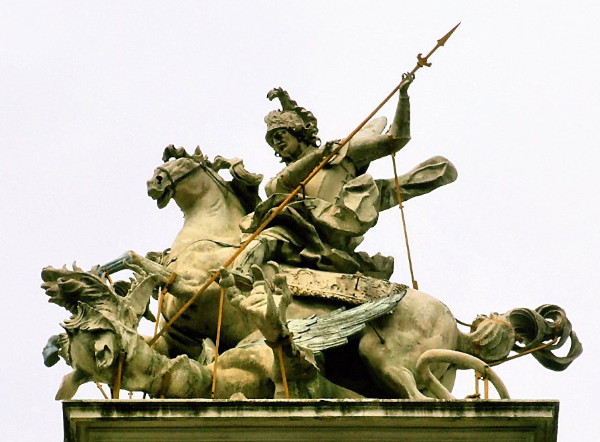Saint George
Saint George (Sviatyi Yurii). A Christian martyr of the 3rd to 4th century whose feast is celebrated on 6 May (23 April OS). This feast day heralded the arrival of spring in the traditional Ukrainian calendar (see Folk calendar). Folk motifs note that it is Saint George who ‘unlocks’ the earth. As he was commonly regarded as a protector of agriculturists, processions to bless the fields—complete with priests, church banners, icons, and holy water—were common on his feast day. Frequently meals were eaten in the fields, and some of the food was often buried afterwards with a prayer for the fecundity of the land, or fed to animals (particularly the remains of Easter fare). Saint George was also regarded as a protector of animals, and on his feast day a variety of rituals were enacted to ward off ‘unclean spirits’ from them, particularly witches, who were believed to be doubly active during this transitional period in their efforts to ‘take away’ the milk of cows and leave them dry. The evening before Saint George ‘arrived’ all animals on a farmstead were rounded into outbuildings, whose entrances were then symbolically secured with a cross painted on with grease or tar. The following day the cattle were herded across embers (from fires lit the evening before as an additional protective measure) to purify and make them ‘as strong as fire.’ The ashes were later scattered across the sown fields.
The figure of Saint George in Ukrainian iconography is much in line with the general Christian image of him as the dragonslayer riding a white horse, representing the triumph of Christianity over paganism. As a symbol of chivalry Saint George is the patron saint of the Plast Ukrainian Youth Association, and his feast is traditionally commemorated by Plast members as the ‘Celebration of Spring’ (Sviato vesny).
[This article originally appeared in the Encyclopedia of Ukraine, vol. 4 (1993).]
